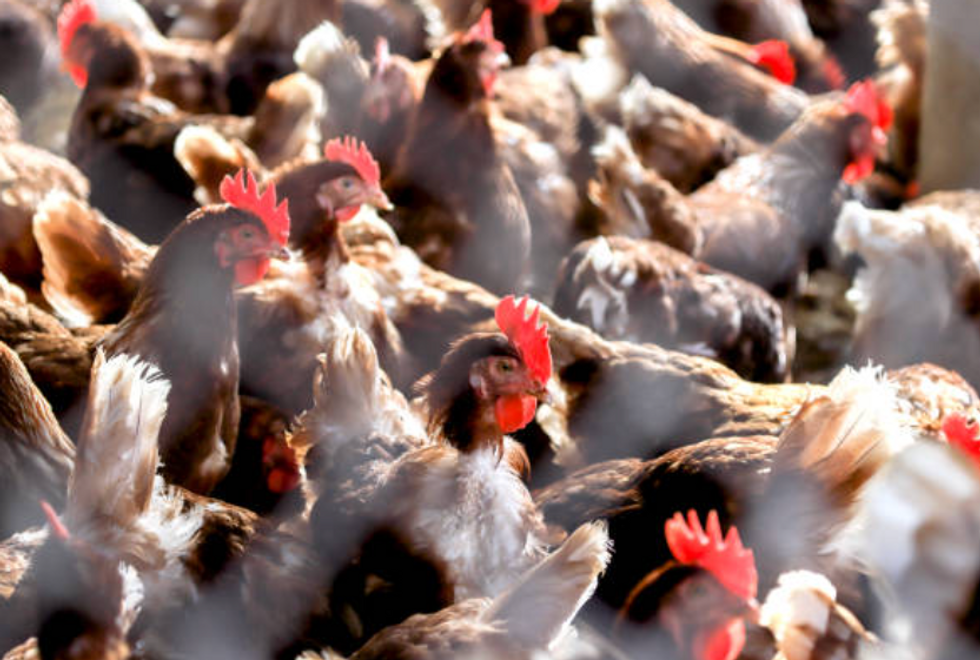Scientists 'kept up at night' over fears new pandemic with 50% mortality rate is 'evolving under the radar'

Researchers say global control strategies are not working as HN51 spreads
|Getty Images/Grok

It comes after the Centers for Disease Control and Prevention confirmed the first human case with no known animal exposure earlier this month
- Control strategies for HN51 are inadequate, new study finds
- The bird flu strain is spreading like wildfire in America
- Fears mount over human-to-human transmission
Don't Miss
Most Read
The world is sleepwalking into a new pandemic far worse than Covid, a horror new study suggests.
A review of sustained mammal-to-mammal bird flu transmission in diverse species, led by The Pirbright Institute, shows global control strategies for the H5N1 avian influenza virus, also known as bird flu, are not working.
Writing in Nature, researchers analysed whether outbreaks in European fur farms, South American marine mammals and United States dairy cattle raise questions about whether humans are next. Led by zoonotic influenza specialist Doctor Thomas Peacock, the scientists evaluated how recent changes in the ecology and molecular evolution of H5N1 in wild and domestic birds increase opportunities for spillover to mammals.
They also weighed various evolutionary pathways that could turn the global H5N1 influenza panzootic into a human pandemic virus.
The virus has been detected in wild birds, poultry, and dairy cows across America. Nearly 200 dairy herds in 14 states have tested positive for the H5 strain.

The bird flu strain has been detected in wild birds, poultry, and dairy cows across America
| Getty ImagesFourteen human cases have also been confirmed, one of which has no known link to animal exposure.
"Influenza A viruses (IAV) have caused more documented global pandemics in human history than any other pathogen. Historically, swine are considered optimal intermediary hosts that help avian influenza viruses adapt to mammals before jumping to humans," said Doctor Peacock, who investigates the drivers of the current H5N1 avian influenza panzootic.
"However, the altered ecology of H5N1 has opened the door to new evolutionary pathways."
The jump to cows is particularly concerning as humans share 80 per cent of their DNA with bovines.
The review highlights potential gaps in control mechanisms, including a reluctance to engage with modern vaccine and surveillance technologies and a dearth of data collection around the transmission of H5N1 between cows and humans working on dairy farms.
While previous generations of US cattle producers had eradicated foot-and-mouth disease by rapidly sharing epidemiological data, the authors say months of missing data is leaving researchers, veterinarians, and policymakers in the dark.
"H5N1 is a reportable disease in poultry, but not mammals, in the US. The US Department of Agriculture requires H5N1 testing only in lactating cattle prior to interstate movement," said Doctor Peacock.
Current practices for H5N1 testing in wildlife focus on carcasses, not monitoring animals while alive, the paper notes, providing opportunities for variants of H5N1 to spread silently undetected.
"What keeps scientists up at night is the possibility of unseen chains of transmission silently spreading through farm worker barracks, swine barns, or developing countries, evolving under the radar because testing criteria are narrow, government authorities are feared, or resources are thin."
An evolutionary process of "genomic reassortment" in viruses with segmented genomes is driving the global panzootic outbreak. When two or more viruses co-infect a single host, they can swap entire segments during genome replication to create novel hybrids.
The reassortment between H5N8 - a subtype of bird flu - and low pathogenicity avian influenza (LPAI) viruses (the milder types) that generated the panzootic H5N1 virus in the Americas is believed to have occurred in Europe or Central Asia around 2020, infecting South American marine mammals and US dairy cattle.
The writers say the prospect of H5N1 becoming continually present in Europe and the Americas is a turning point for HN51, which was first detected in wild geese in southeast China.
"New control strategies are needed, including vaccination. Influenza vaccines are licensed for poultry that reduce disease burden, but do not prevent infection and have varying degrees of success."
Stocks of H5 vaccine that are antigenically related to circulating viruses are available and could be produced at scale using mRNA platforms if H5N1 begins spreading in humans, the authors note.
Antigenically related vaccines refer to vaccines that are designed to target pathogens (like viruses or bacteria) that share similar antigenic structures - molecules or molecular structures on the surface of pathogens that the immune system recognises as foreign, prompting an immune response.
However, there are fears that the current vaccine candidates will be ineffective at neutralising one of the rarer mutations present in this virus.
LATEST HEALTH DEVELOPMENTS

New control strategies are urgently needed, including vaccination, to stave off a new human pandemic, scientists say
|Grok
A156T is a rare mutation present in fewer than one per cent of samples collected from dairy cows. Genetic sequencing has also identified it in a recent human case in Missouri.
Unlike previous cases, the person had not been in close contact with infected dairy cattle or poultry. Nor were they exposed to raw milk - another source of the infection.
This has raised concerns that HN51 is spreading between humans and that the rare mutation could evade antibodies induced through vaccination.
Research by Professor Jesse Bloom at the Fred Hutchinson Cancer Center in Washington state and his colleagues suggested A156T can diminish the ability of antibodies to recognise and neutralise the virus.
Why should we be worried?
The rapid evolution of HN51 is unnerving virologists because the mortality rate for H5N1 humans is high, with a 52 per cent case fatality rate (CFR) from January 1, 2003, to July 19, 2024.
However, this may be an overestimate as some people may have no symptoms or only mild symptoms.
Also, the latest outbreak has resulted in a much milder illness, with patients reporting flu-like symptoms before fully recovering.
"The severity of a future H5N1 pandemic remains unclear. Recent human infections with H5N1 have a substantially lower case fatality rate compared to prior H5N1 outbreaks in Asia, where half of the people with reported infections died. The lack of severity in US cases may be due to infection through the eye, rather than through viral pneumonia in the lung," the researchers noted in the latest study.
Older people appear to have partial immunity to H5N1 due to childhood exposure, whereas younger people born since the 1968 H3N2 pandemic may be more susceptible to severe disease in a H5N1 pandemic, they note.










